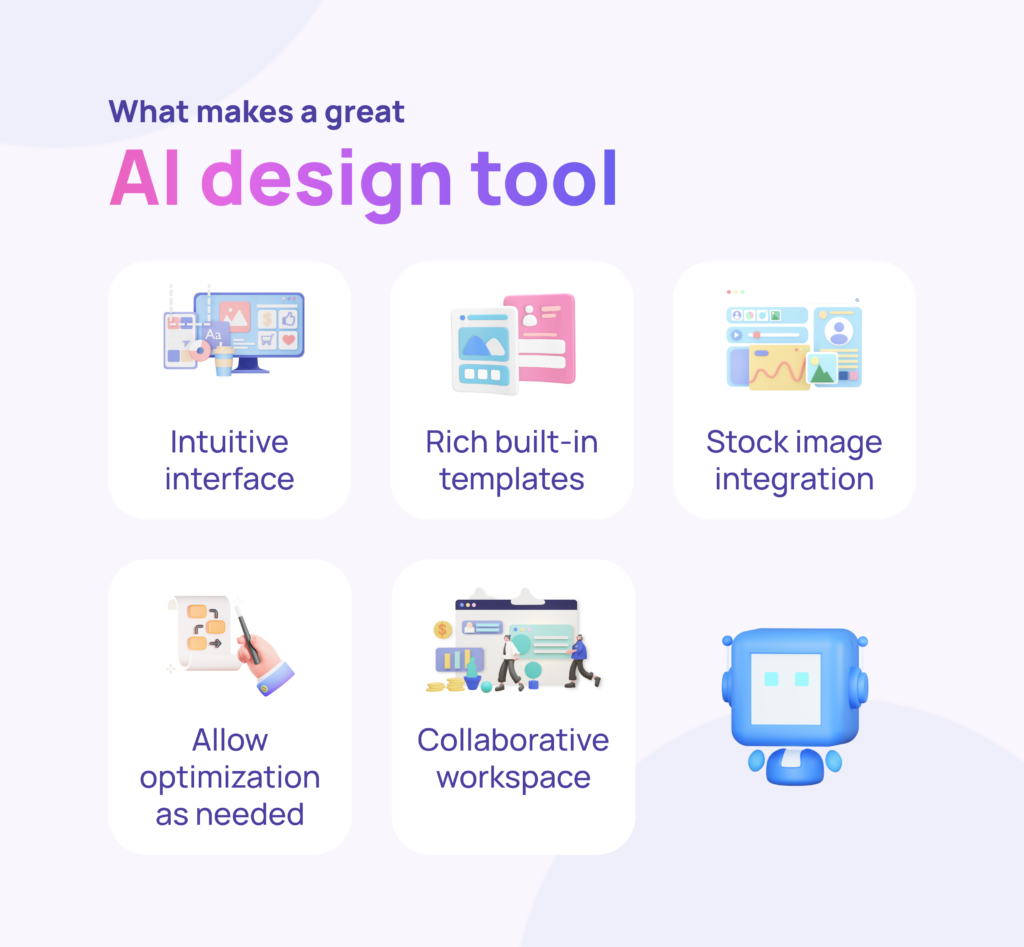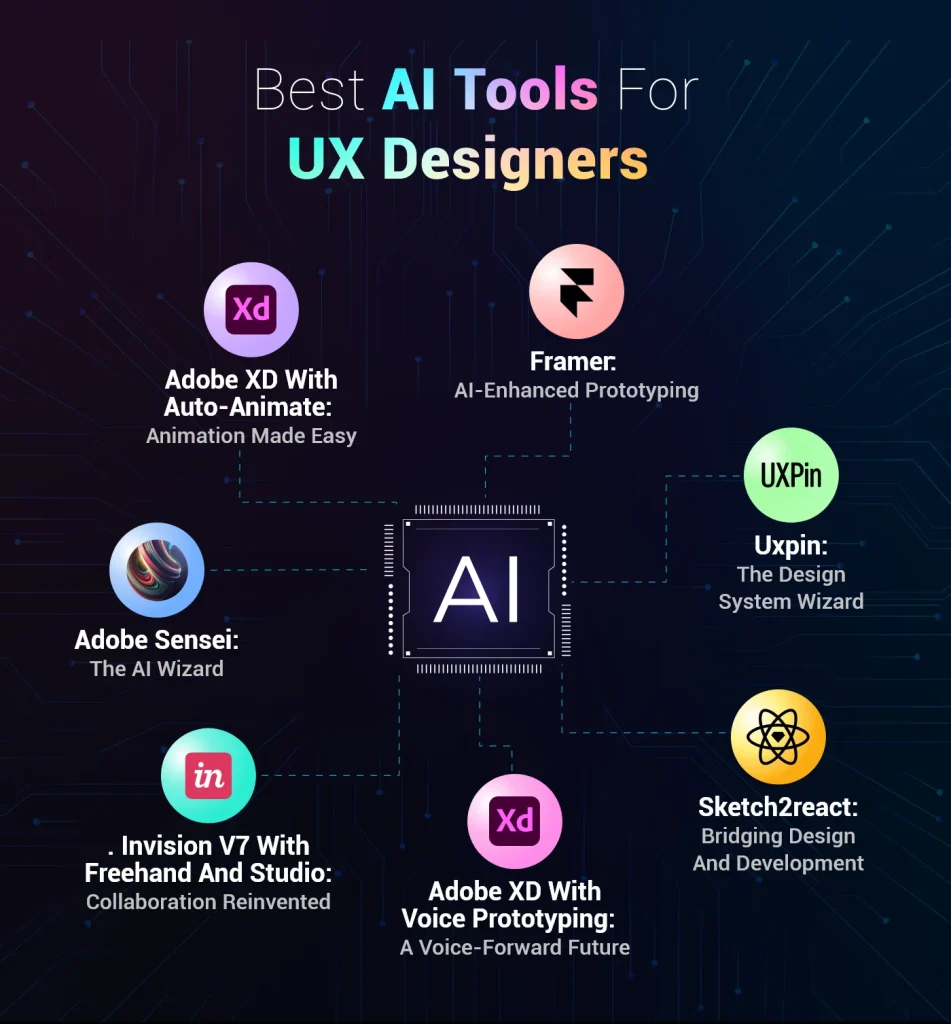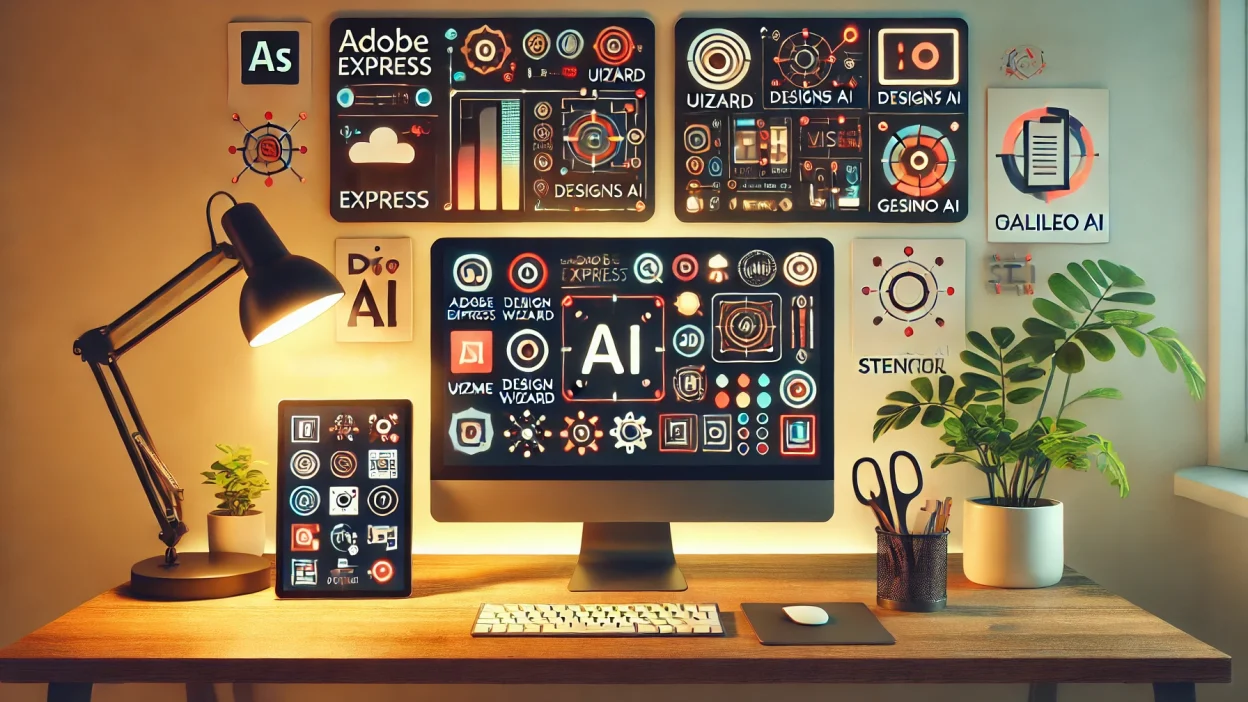Introduction
Artificial Intelligence (AI) is transforming industries across the board—and design is no exception. From generating layouts to suggesting color palettes and even writing copy, AI-powered design tools are becoming increasingly sophisticated. But this rapid evolution raises a critical question: Are these tools replacing designers, or are they empowering them to do more?
In this blog, we’ll explore the capabilities of AI in design, examine its impact on the creative process, and discuss whether designers should fear or embrace this technological shift. Spoiler alert: it’s more about collaboration than competition.
Section 1: What Are AI-Powered Design Tools?
AI-powered design tools use machine learning, natural language processing, and computer vision to automate or assist in design tasks. These tools can:
- Generate layouts and templates
- Suggest typography and color schemes
- Create illustrations and icons
- Resize and adapt designs for multiple platforms
- Analyze user behavior to optimize UX
Popular Examples:
- Canva’s Magic Design: Auto-generates templates based on user input
- Adobe Firefly: AI-generated images and effects
- Figma’s AI plugins: Auto-layout suggestions, content generation
- Khroma: AI-based color palette generator
- Runway ML: Video editing and image generation using AI
Section 2: How AI Is Changing the Design Workflow
1. Speed and Efficiency
- Rapid prototyping
- Automated resizing and formatting
- Instant mockups and wireframes
2. Enhanced Creativity
- Idea generation through AI prompts
- Style transfer and generative art
- Breaking creative blocks
3. Data-Driven Design
- Heatmap analysis
- Predictive UX improvements
- A/B testing insights
4. Accessibility and Democratization
- Non-designers can create professional-looking assets
- Lower barrier to entry for startups and small businesses
Section 3: Are Designers Being Replaced?
The Fear:
- Automation of repetitive tasks
- AI-generated logos, websites, and ads
- Reduced demand for entry-level designers
The Reality:
- AI lacks emotional intelligence and context
- Human creativity, storytelling, and empathy are irreplaceable
- Designers are evolving into creative directors, strategists, and AI curators
The Shift:
- From execution to ideation and refinement
- Designers guide AI, not compete with it
Section 4: How Designers Can Leverage AI

1. Idea Generation
- Use AI to brainstorm layouts, styles, and concepts
2. Rapid Prototyping
- Tools like Uizard and Figma AI speed up wireframing
3. Content Creation
- AI-generated copy, icons, and illustrations
4. Accessibility Improvements
- Auto-captioning, alt-text generation, and layout adjustments
5. Collaboration
- Real-time feedback and version control
- AI-assisted design reviews
6. Learning and Upskilling
- Understanding AI logic and training models
- Becoming proficient in AI-enhanced tools
Section 5: Ethical and Creative Considerations
1. Originality vs. Automation
- Risk of homogenized design
- Importance of human touch
2. Bias in AI Models
- Training data can reflect societal biases
- Designers must audit and correct outputs

3. Ownership and Copyright
- Who owns AI-generated content?
- Legal gray areas in commercial use
4. User Trust
- Transparency in AI usage
- Avoiding deceptive design practices
Section 6: The Future of Design with AI
1. Hybrid Roles
- Designer + Technologist
- Creative Strategist + AI Specialist
2. Tool Evolution
- Smarter, more intuitive interfaces
- Personalized design assistants
3. Human-Centered AI
- Tools that adapt to designer workflows
- AI that learns from individual style and preferences

4. Education and Training
- Design schools integrating AI into curriculum
- Continuous learning for professionals
Conclusion
AI-powered design tools are not here to replace designers—they’re here to amplify them. By automating the mundane and enhancing the creative, AI allows designers to focus on what truly matters: strategy, storytelling, and human connection.
The future of design is collaborative. Designers who embrace AI will find themselves more productive, more creative, and more in demand than ever. The key is to stay curious, keep learning, and use AI as a partner—not a competitor.





